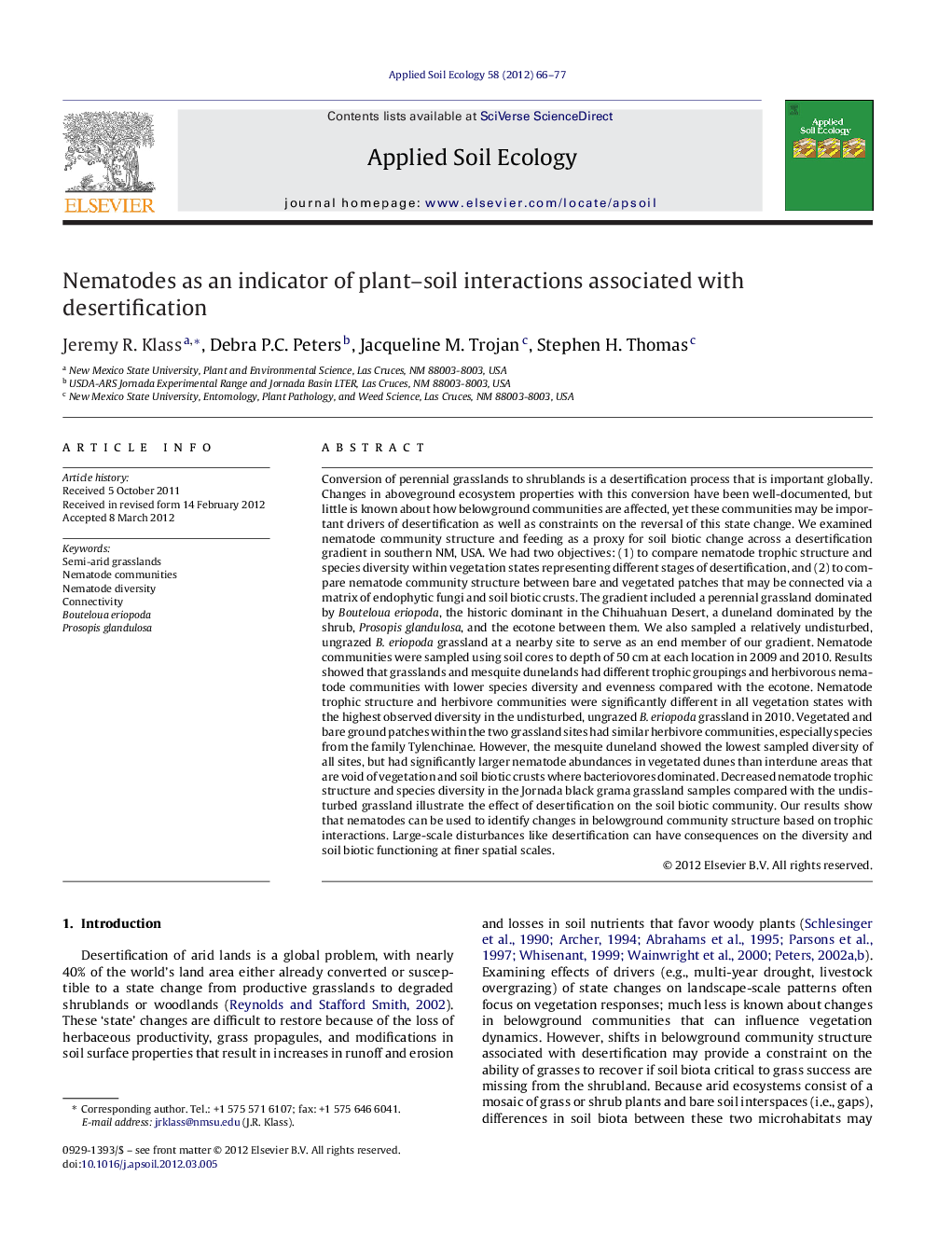| کد مقاله | کد نشریه | سال انتشار | مقاله انگلیسی | نسخه تمام متن |
|---|---|---|---|---|
| 4382564 | 1617825 | 2012 | 12 صفحه PDF | دانلود رایگان |

Conversion of perennial grasslands to shrublands is a desertification process that is important globally. Changes in aboveground ecosystem properties with this conversion have been well-documented, but little is known about how belowground communities are affected, yet these communities may be important drivers of desertification as well as constraints on the reversal of this state change. We examined nematode community structure and feeding as a proxy for soil biotic change across a desertification gradient in southern NM, USA. We had two objectives: (1) to compare nematode trophic structure and species diversity within vegetation states representing different stages of desertification, and (2) to compare nematode community structure between bare and vegetated patches that may be connected via a matrix of endophytic fungi and soil biotic crusts. The gradient included a perennial grassland dominated by Bouteloua eriopoda, the historic dominant in the Chihuahuan Desert, a duneland dominated by the shrub, Prosopis glandulosa, and the ecotone between them. We also sampled a relatively undisturbed, ungrazed B. eriopoda grassland at a nearby site to serve as an end member of our gradient. Nematode communities were sampled using soil cores to depth of 50 cm at each location in 2009 and 2010. Results showed that grasslands and mesquite dunelands had different trophic groupings and herbivorous nematode communities with lower species diversity and evenness compared with the ecotone. Nematode trophic structure and herbivore communities were significantly different in all vegetation states with the highest observed diversity in the undisturbed, ungrazed B. eriopoda grassland in 2010. Vegetated and bare ground patches within the two grassland sites had similar herbivore communities, especially species from the family Tylenchinae. However, the mesquite duneland showed the lowest sampled diversity of all sites, but had significantly larger nematode abundances in vegetated dunes than interdune areas that are void of vegetation and soil biotic crusts where bacteriovores dominated. Decreased nematode trophic structure and species diversity in the Jornada black grama grassland samples compared with the undisturbed grassland illustrate the effect of desertification on the soil biotic community. Our results show that nematodes can be used to identify changes in belowground community structure based on trophic interactions. Large-scale disturbances like desertification can have consequences on the diversity and soil biotic functioning at finer spatial scales.
► Used nematodes as a proxy for soil biotic change across a desertification gradient.
► Grasslands and mesquite dunelands had different trophic and herbivore groupings.
► Ends of gradient had lower species diversity and evenness than the ecotone.
► No change in community structure in vegetated and bare ground patches in grasslands.
► Nematode communities are novel in identifying soil biotic changes in arid systems.
Journal: Applied Soil Ecology - Volume 58, July 2012, Pages 66–77